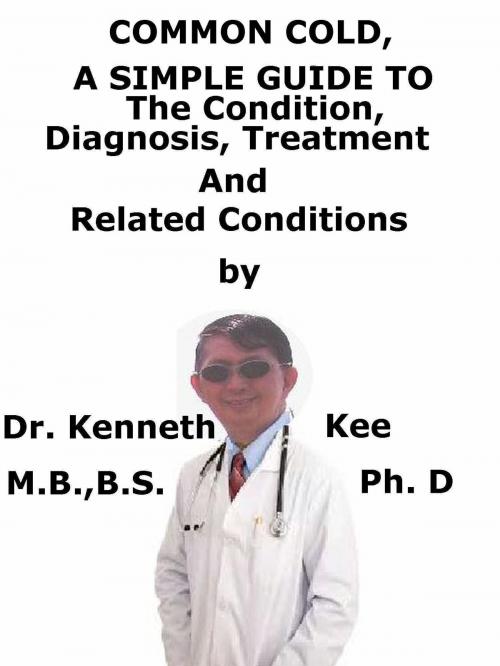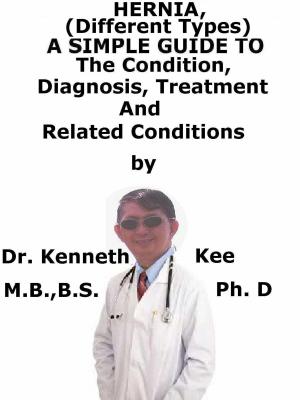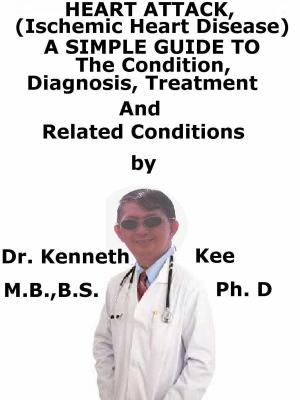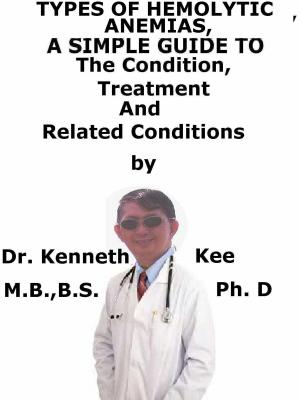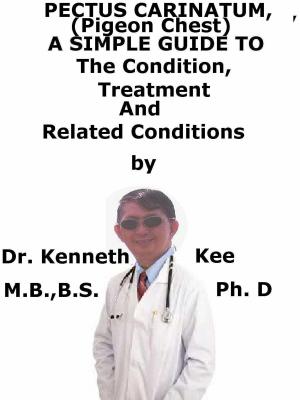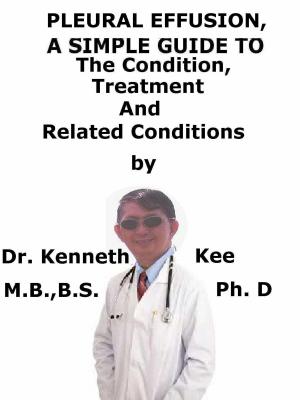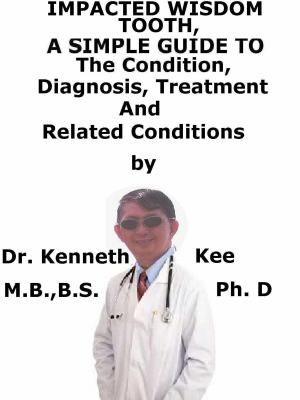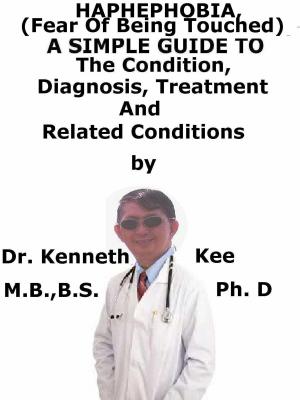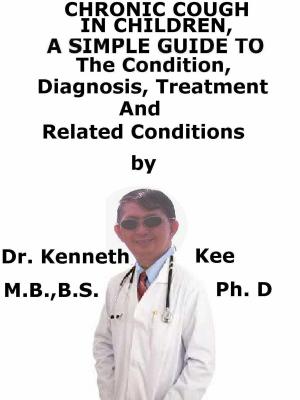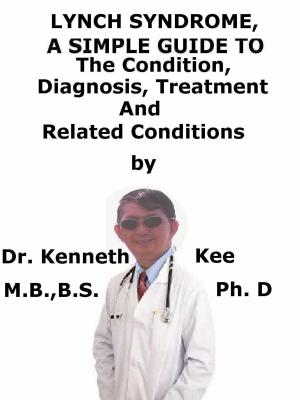Common Cold, A Simple Guide To The Condition, Diagnosis, Treatment And Related Conditions
Nonfiction, Health & Well Being, Health, Ailments & Diseases, Respiratory, Medical, Infectious Diseases, General| Author: | Kenneth Kee | ISBN: | 9781370757558 |
| Publisher: | Kenneth Kee | Publication: | November 7, 2016 |
| Imprint: | Smashwords Edition | Language: | English |
| Author: | Kenneth Kee |
| ISBN: | 9781370757558 |
| Publisher: | Kenneth Kee |
| Publication: | November 7, 2016 |
| Imprint: | Smashwords Edition |
| Language: | English |
Common Cold
Who has never had the common cold?
The code words are “Ah Choo” or sneezing, dripping of nose, pain in the throat and occasional fever.
Cold weather, rain, freezer, snow, air conditioner are the precursor of a common cold. Once one person gets the common cold, every one in a closed environment gets it.
That is why they called it the common cold.
The Common Cold is considered the viral infection of the upper respiratory tract caused by one of many contagious viruses that intrude into the nose, throat, sinuses or ears.
The virus travels:
1. From hand to mouth or
2. Through the air on minute droplets carrying infected secretions from one sneezing wheezing child to another.
Once in the body the virus settles in and multiplies in the child causing symptoms.
It is normal for many children to catch a cold week after week since the child’s immune system is still developing.
Under 4 years old the child will have an average of 7 colds a year.
Older children will have 4-5 colds a year.
Adults will even have less than 3 colds per year.
The common cold usually in colder weather and is worse in the winter months from October to February.
The common cold virus consist over 200 different viruses such as:
a. Rhinovirus,
b. Respiratory syncytial virus (RSV),
c. Corona virus,
d. Rotavirus.
Even SARS (Severe Acute Respiratory Syndrome) and MERS (Middle East Respiratory Syndrome) are from the common cold virus family.
Generally the common cold viruses produce mild but uncomfortable symptoms which seldom last more than 1 week:
Unlike Influenza, the patient suffers more from inflammation of the mucous membranes of the nose and throat, with sneezing, sore throat, and usually mild coughing.
1. Runny nose
2. Nasal congestion
3. Sneezing
4. Sore throat
5. Tiredness
6. Headache especially around the eyes and forehead
Normally a common cold illness runs its course without complications in one week.
The membranes of the mucosa in the upper respiratory tract swell.
Mucus production is increased.
The swelling causes the air passages in the respiratory tract to narrow making breathing difficult.
The sinuses become congested.
The nose runs.
These are followed by sneezing, aching head and body and watery eyes as part of the process of Common cold infection.
The initial phase lasts for 2-5 days with nasal congestion, low grade fever and cough.
At the most contagious period the nasal secretions thin watery mucus composed entirely of viral discharge.
When the secretions turned thick and yellowish or greenish, the discharge is full of dead white blood cells (immune cells), dead viral particles and bacteria.
Surprisingly this is a sign of healing and the minimal contagious stage of a common cold.
A common cold usually lasts 5-10 days if not complicated.
Because there is no cure for a viral infection, the doctor usually aim at relieving the symptoms:
1. Rest is the most important part of treatment.
A rested patient will recover faster.
2. Adequate warm fluids keep the mucus membranes moist to allow infected mucus to flow better and also to replace wet mucus lost during the runny nose.
3. If there is any fever, headaches and pains, paracetamol can be given to relieve symptoms.
Aspirin should not be given in children because of the danger of Reye’s syndrome which can affect the brain.
4. Oral (tablet or syrup) decongestants may also relieve nasal symptoms.
Antihistamines may help to dry mucus production but do not effectively relieve the common cold..
5. Decongestant sprays can relieve block nose temporarily, but should not be used for more than three days.
TABLE OF CONTENT
Introduction
Chapter 1 Common Cold
Chapter 2 Causes
Chapter 3 Symptoms
Chapter 4 Diagnosis
Chapter 5 Treatment
Chapter 6 Prognosis
Chapter 7 Allergic Rhinitis
Chapter 8 Sneeze
Epilogue
Common Cold
Who has never had the common cold?
The code words are “Ah Choo” or sneezing, dripping of nose, pain in the throat and occasional fever.
Cold weather, rain, freezer, snow, air conditioner are the precursor of a common cold. Once one person gets the common cold, every one in a closed environment gets it.
That is why they called it the common cold.
The Common Cold is considered the viral infection of the upper respiratory tract caused by one of many contagious viruses that intrude into the nose, throat, sinuses or ears.
The virus travels:
1. From hand to mouth or
2. Through the air on minute droplets carrying infected secretions from one sneezing wheezing child to another.
Once in the body the virus settles in and multiplies in the child causing symptoms.
It is normal for many children to catch a cold week after week since the child’s immune system is still developing.
Under 4 years old the child will have an average of 7 colds a year.
Older children will have 4-5 colds a year.
Adults will even have less than 3 colds per year.
The common cold usually in colder weather and is worse in the winter months from October to February.
The common cold virus consist over 200 different viruses such as:
a. Rhinovirus,
b. Respiratory syncytial virus (RSV),
c. Corona virus,
d. Rotavirus.
Even SARS (Severe Acute Respiratory Syndrome) and MERS (Middle East Respiratory Syndrome) are from the common cold virus family.
Generally the common cold viruses produce mild but uncomfortable symptoms which seldom last more than 1 week:
Unlike Influenza, the patient suffers more from inflammation of the mucous membranes of the nose and throat, with sneezing, sore throat, and usually mild coughing.
1. Runny nose
2. Nasal congestion
3. Sneezing
4. Sore throat
5. Tiredness
6. Headache especially around the eyes and forehead
Normally a common cold illness runs its course without complications in one week.
The membranes of the mucosa in the upper respiratory tract swell.
Mucus production is increased.
The swelling causes the air passages in the respiratory tract to narrow making breathing difficult.
The sinuses become congested.
The nose runs.
These are followed by sneezing, aching head and body and watery eyes as part of the process of Common cold infection.
The initial phase lasts for 2-5 days with nasal congestion, low grade fever and cough.
At the most contagious period the nasal secretions thin watery mucus composed entirely of viral discharge.
When the secretions turned thick and yellowish or greenish, the discharge is full of dead white blood cells (immune cells), dead viral particles and bacteria.
Surprisingly this is a sign of healing and the minimal contagious stage of a common cold.
A common cold usually lasts 5-10 days if not complicated.
Because there is no cure for a viral infection, the doctor usually aim at relieving the symptoms:
1. Rest is the most important part of treatment.
A rested patient will recover faster.
2. Adequate warm fluids keep the mucus membranes moist to allow infected mucus to flow better and also to replace wet mucus lost during the runny nose.
3. If there is any fever, headaches and pains, paracetamol can be given to relieve symptoms.
Aspirin should not be given in children because of the danger of Reye’s syndrome which can affect the brain.
4. Oral (tablet or syrup) decongestants may also relieve nasal symptoms.
Antihistamines may help to dry mucus production but do not effectively relieve the common cold..
5. Decongestant sprays can relieve block nose temporarily, but should not be used for more than three days.
TABLE OF CONTENT
Introduction
Chapter 1 Common Cold
Chapter 2 Causes
Chapter 3 Symptoms
Chapter 4 Diagnosis
Chapter 5 Treatment
Chapter 6 Prognosis
Chapter 7 Allergic Rhinitis
Chapter 8 Sneeze
Epilogue
